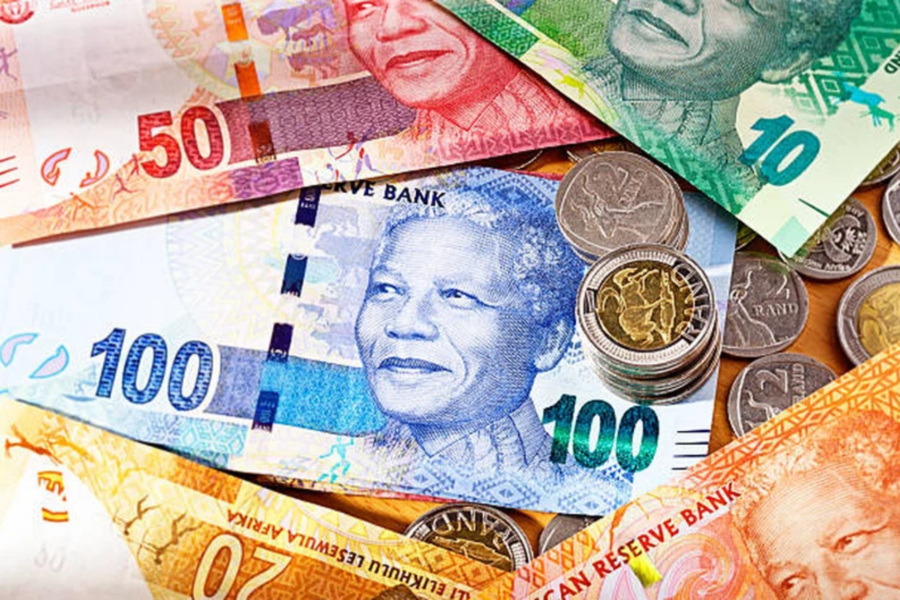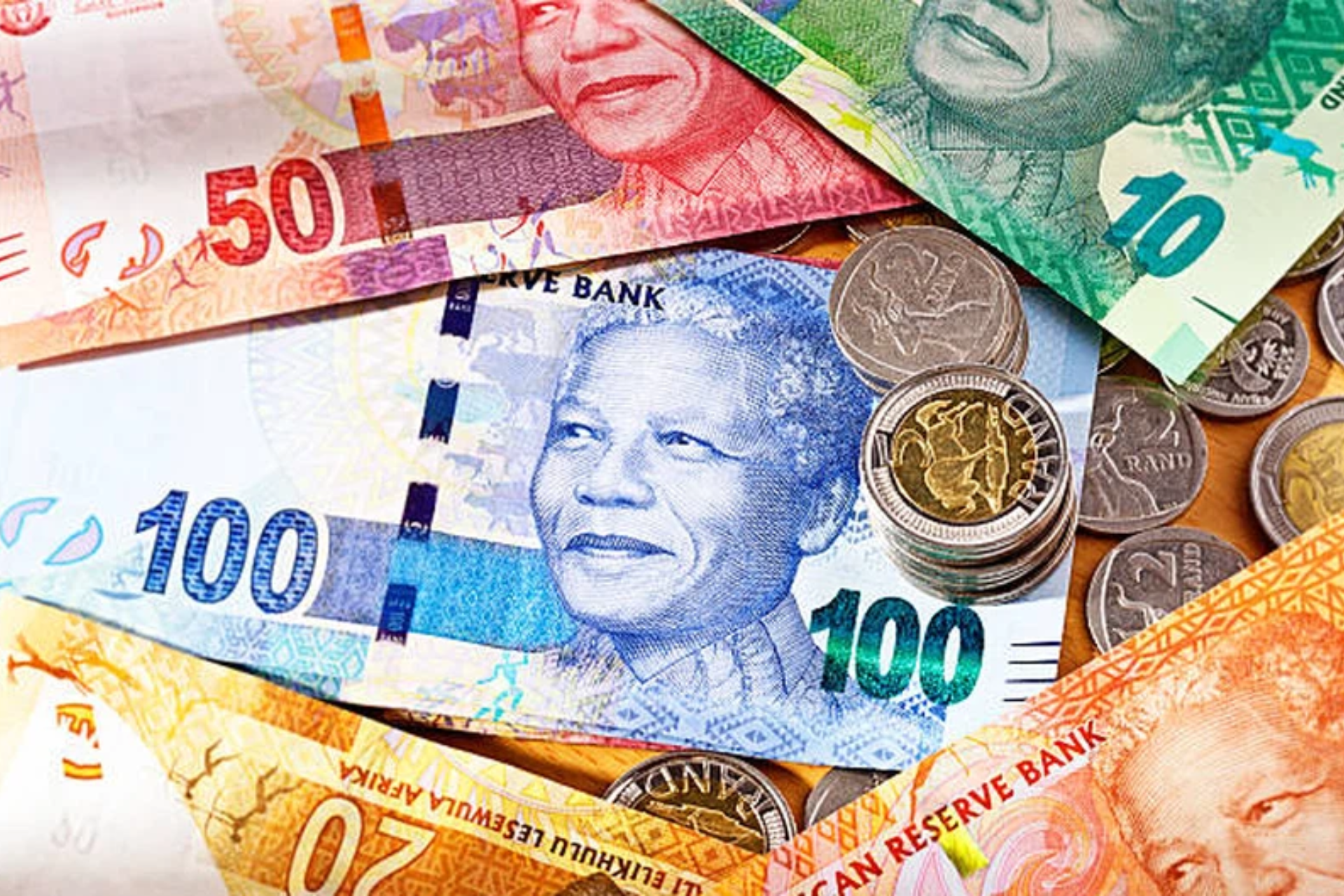
South African Rand soared over 2% after U.S. inflation data
The South African rand soared over 2% on Tuesday as the dollar slumped after softer-than-expected U.S. consumer inflation data boosted interest rate expectations.

Reuters: The South African rand soared over 2% on Tuesday as the dollar slumped after softer-than-expected U.S. consumer inflation data boosted expectations that the Federal Reserve might be done with interest rate hikes.
SOUTH AFRICAN RAND SOARED
At 1500 GMT the rand traded at 18.3600 against the dollar, about 2% stronger than its previous close. The dollar last traded about 1.1% weaker against a basket of global currencies. U.S. consumer prices were unchanged in October amid lower gasoline prices, and underlying inflation showed signs of slowing, supporting views that the Fed was probably done raising interest rates.
“A softer inflationary impulse in the US, all but ends any remaining bets that the US Federal Reserve might still hike interest rates further in the current cycle,” Danny Greeff, co-head of Africa at ETM Analytics, told Reuters. If softer inflation is sustained, “it will also support the case for the Fed to take its feet of the brakes and gradually turn more growth-sensitive through the months ahead,” he added. Like other risk-sensitive currencies, the rand often takes cues from global drivers such as U.S. monetary policy as well as local data points.
Locally, South Africa’s unemployment rate fell to 31.9% in the third quarter of this year from 32.6% in the second quarter, statistics agency data showed on Tuesday. On the Johannesburg Stock Exchange, the blue-chip Top-40 index closed over 2.5% stronger. South Africa’s benchmark 2030 government bond was stronger, with the yield down 18.5 basis point at 10.230%.
ALSO READ: Fuel price: Diesel news EXCELLENT for December 2023
U.S. DOLLAR
Reuters: The dollar fell more than 1% against major currencies on Tuesday after U.S. consumer price data showed the pace of inflation moderating further in October, increasing the odds that the Federal Reserve is done hiking interest rates. U.S. consumer prices were unchanged last month amid lower gasoline prices, the Labor Department’s Bureau of Labor Statistics said, following a 0.4% rise in September. In the 12 months through October, the consumer price index climbed 3.2% after rising 3.7% in September, BLS said.
The dollar immediately tumbled on the report’s release and Treasury yields plunged. The benchmark 10-year fell below 4.5%, removing a major support to the dollar’s strength this year. “We think that the dollar will continue to weaken a bit throughout the end of the year, maybe even early into January,” said John Doyle, head of trading and dealing at Monex USA in Washington. The dollar index, a measure of the U.S. currency against six peers, slid 1.55% to 103.980, on track to its biggest single-day percentage decline since Nov. 11, 2022.
The U.S. currency also was poised for its largest declines since November 2022 against the euro and British pound. The dollar slipped 1.73% against the euro to $1.089, 1.82% against the British pound to $1.250 and 1.52% against the Swiss franc to 0.888. The dollar also fell more than 1% versus the Norwegian krone and more than 2% against the Australian and New Zealand dollars. The data was welcome news in the market, where many analysts have been predicting the Fed’s interest rate hiking has peaked. “You can say goodbye to the rate-hiking era,” said Brian Jacobsen, chief economist at Annex Wealth Management in Menomonee Falls, Wisconsin.
ALSO READ: Who is the richest person in the world today? Top 10 list – 15 November 2023
But Doyle, among others, cautioned the end of rate hikes did not mean rate cuts would be coming as soon as markets were predicting due to a tight American labor market and resilient U.S. economy that has kept consumers spending. “I don’t think that they’re going to be itching to cut rates necessarily,” he said, referring to Fed policymakers. “The Fed’s going to feel pretty comfortable to ride it out longer.” Fed Chair Jerome Powell and other policymakers in recent days have tried to push back against expectations that the U.S. central bank was done with its aggressive rate-hike cycle.
Futures show more than a 68% probability that the Fed cuts its overnight lending rate by 25 basis points or more by next May, according to the CME’s FedWatch tool. The Japanese yen, meanwhile, also gained against the dollar, but less than its peers. The yen strengthened 0.97% to 150.23 per dollar when earlier coming under pressure after it briefly jumped against the dollar on Monday – having touched a one-year low. The move was attributed to a flurry of trading in options rather than any intervention from Japanese authorities.
DTCC data from LSEG’s Eikon platform shows yen options worth a notional $3.5 billion with strike prices between 151.90 and 152 are due to expire between Wednesday and Friday. Another $2.2 billion notional worth of options with strikes between 151.90 and 152 will expire between Nov. 20 and the end of the month. Japanese authorities in September and October last year intervened in the currency market to boost the yen for the first time since 1998. “Our base case is that we could have intervention if we break the 152 level for dollar/yen,” said Yusuke Miyairi, an FX strategist at Nomura.
ALSO READ: ‘Weather extremes’: Above-normal rainfall expected this summer
BRITISH POUND
Reuters: The pound trod water on Tuesday as traders held their fire ahead of U.S. inflation data that could be key in dictating the near-term direction of the dollar against other currencies. British data earlier in the day showed UK workers’ wages grew slightly less quickly in the three months to September, but remained close to their record pace. The figures will likely do little to ease the Bank of England’s concerns about inflationary pressures and did nothing to change market-based forecasts for a UK rate cut in June 2024 at the earliest.
Most major central banks are widely expected to have wrapped up their campaign to raise interest rates, so the focus has shifted to when the first cuts will materialise. Unlike UK wage data, Tuesday’s U.S. inflation report could do more to dictate the near-term outlook for sterling, given that it will shape those expectations and either give the dollar another boost, or knock it back. “There is not enough in this jobs report to see big FX or rates moves and sterling is likely to remain in a narrow trading range, albeit to the firmer side, ahead of the U.S. CPI this afternoon and the UK CPI data tomorrow,” MUFG head of research for global markets Derek Halpenny said.
Sterling was up 0.1% against the dollar at $1.2284 and flat against the euro at 87.11 pence. The pound has surrendered a lot of this year’s gains, but, together with the Swiss franc, is one of only two G10 currencies to still hold in positive territory against the dollar in 2023. Sterling is up around 1.6% so far, while the Swiss franc is up 2.5%. Speculators now hold a modest short position in sterling, having whittled away at the largest long position in nine years over the past few months, according to weekly data from the U.S. financial markets regulator. Wednesday’s UK consumer price index is expected to show inflation slowed to an annual rate of 4.8% in October – the lowest for two years – from September’s 6.7%, while the core rate is forecast to have eased to 5.8% from 6.1%.
ALSO READ: Newspaper front pages from around the world, 15 November 2023
The BoE has raised interest rates by a record 5.15 percentage points in 22 months. During that time, headline inflation rose to a peak of 11% last October and has gradually declined mostly as increases in energy and food costs have subsided. “Cooler inflation could offset concerns about the hotter-than-forecast wage growth, which is at least trending in the right direction even if slower than expected,” City Index market strategist Fiona Cincotta said of Wednesday’s CPI report. The pound on Monday showed little reaction to UK Prime Minister Rishi Sunak’s reshuffle of his cabinet, which saw the return of former premier David Cameron to the role of foreign minister and the sacking of interior minister Suella Braverman.
GLOBAL MARKETS
Reuters: Asian stocks leapt while the dollar was nursing its heaviest losses in a year on Wednesday, as steady U.S. inflation figures boosted investor confidence that the Federal Reserve was done hiking interest rates and may start cutting early next year. U.S. headline consumer prices were flat in October, against expectations for a 0.1% rise. Core CPI, at 0.2%, also came in below a forecast of 0.3%. MSCI’s broadest index of Asia-Pacific shares outside Japan was up 1.9% in early trade. Japan’s Nikkei was up 1.8%. Overnight the Nasdaq jumped 2.4%, bonds surged and the dollar slumped more than 1.6% on the euro. “This was – unequivocally – good news on the inflation front,” Sam Rines, managing director at research firm CORBU in Texas, said in a note to clients. “But the relevant question now is: ‘Can it get any better?’”
Interest rate futures swung sharply higher as traders priced out any chance of further rate hikes and foresaw a cut as early as May, with some chance it could come even sooner, in March. Two-year Treasury yields, which closely track short-term rate expectations, dived more than 22 basis points on Tuesday and held steady at 4.84% in Tokyo trade on Wednesday. Ten-year yields fell 19 bps overnight and touched an almost two-month low of 4.43% in Asia, having tumbled below support at 4.5%. Yields fall when bond prices climb.
ALSO READ: Who are the richest South Africans in the world today? – 15 November 2023
In foreign exchange trade, the dollar suffered its heaviest selling in 12 months, with the sharpest losses against risk-sensitive currencies such as the Australian dollar. The Aussie leapt 2% overnight and was steady at $0.6496 in Asia. The New Zealand dollar held on to a 2.2% gain, at $0.60. The euro broke above $1.08 and even the battered yen rallied to 150.5 per dollar. The detail of the data offered extra cheer to investors, with evidence of rent rises moderating. Car prices fell and a downtrend in six-month annualised core inflation remained intact.
“This reading will likely confirm, in our view, that the Fed is now on hold on rates,” said Chetan Seth, strategist at Nomura. “Recent U.S. labour market and inflation reports suggest an economy that is softening, but not collapsing, and bond yields and oil prices have moderated, thus reducing hard-landing risks for the economy next year.” On the other side of the world, China’s central bank boosted liquidity injections on Wednesday, although it kept the interest rate unchanged when rolling over maturing medium-term policy loans. The yuan held near a two-month high.
In Japan, the Bank of Japan stepped back and pared its regular bond buying as markets rallied. Ten-year Japanese government bond yields hit a one-month low of 0.775%. U.S. retail sales data are the next focus for markets, although analysts think that even a positive number is unlikely to dampen the euphoria over the prospective end of the rate hike cycle. “With so many disinflationary forces, including softening labour markets in the U.S. and Canada, it feels to me the market will run with this number and even a strong retail sales release, cannot derail the soft landing / 1995 vibes,” Spectra Markets President Brent Donnelly said in a note.
ALSO READ: On This Day in South Africa: What happened on 15 November?
Published by the Mercury Team on 15 November 2023
